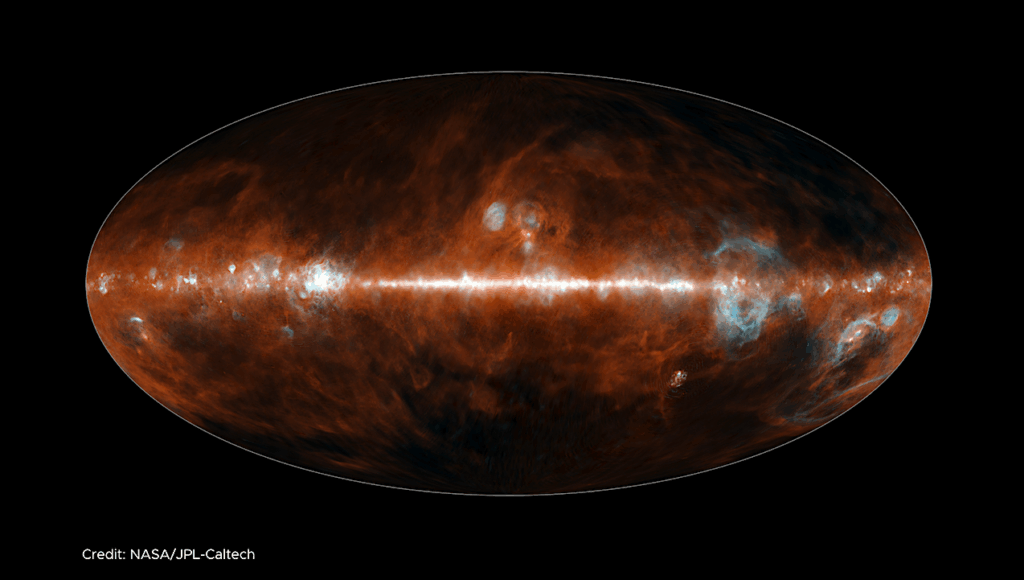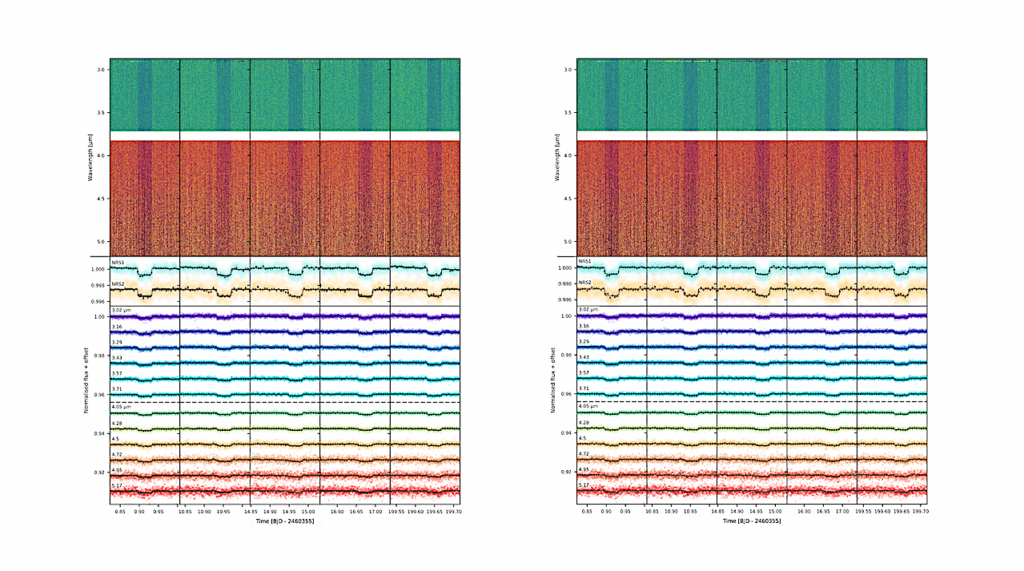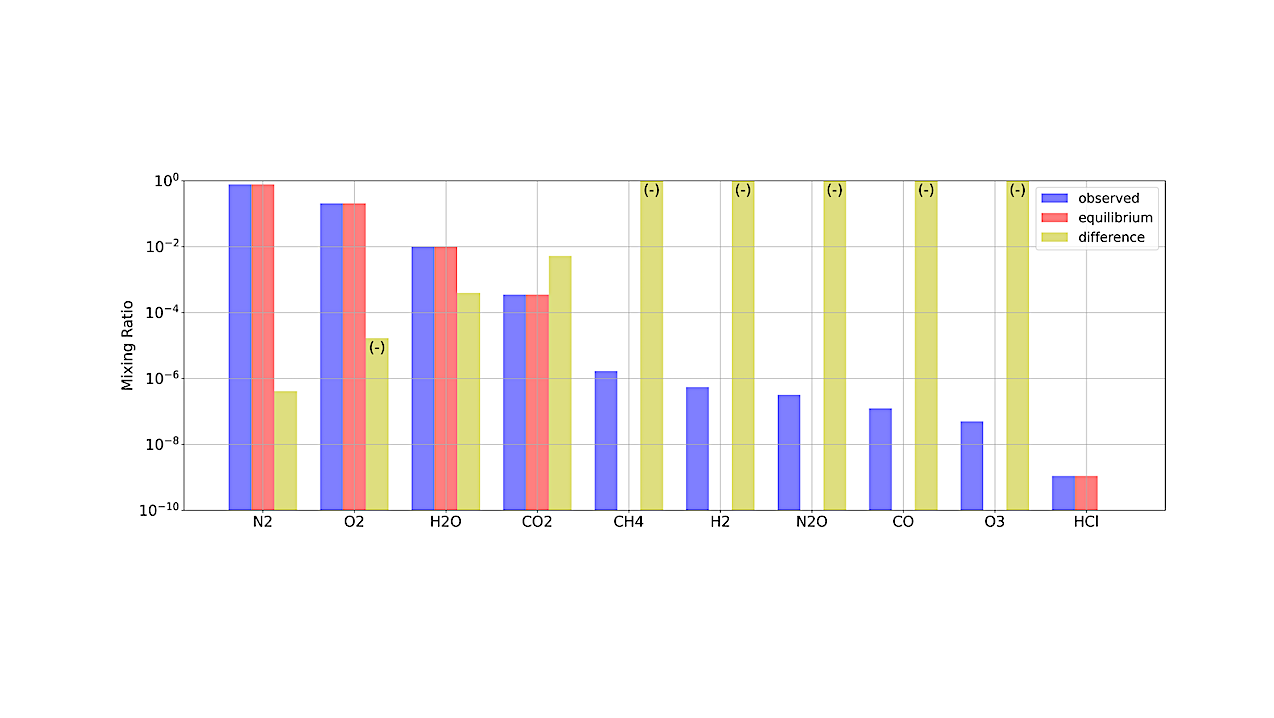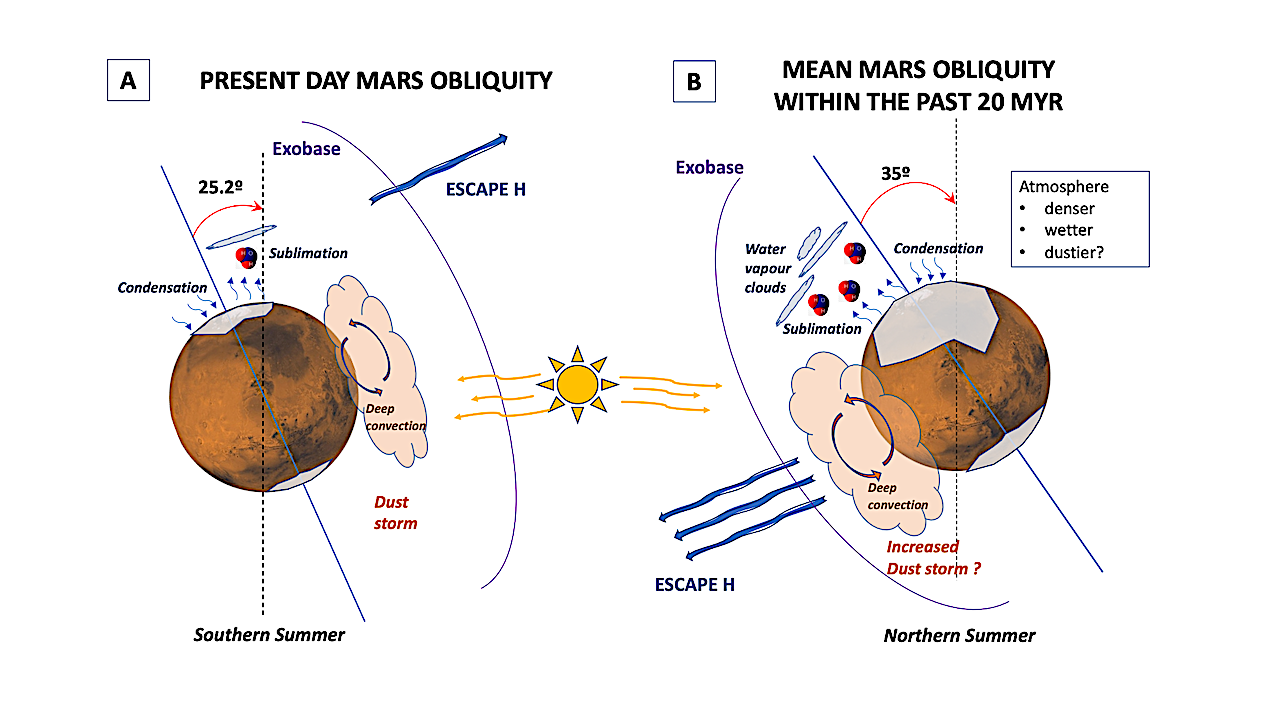Now Reading: Abiotic Ozone In The Observable Atmospheres Of Venus And Venus-like Exoplanets
-
01
Abiotic Ozone In The Observable Atmospheres Of Venus And Venus-like Exoplanets
Abiotic Ozone In The Observable Atmospheres Of Venus And Venus-like Exoplanets


Schematic showing some of the major chemical cycles involved in ozone (O3) formation in Venus’s atmosphere. The major H, S and Cl bearing species are outgassed from Venus’s surface. These species are subsequently dissociated by photochemistry, and the products are involved in chemical cycles that produce O2 and O. The resulting O2 and O react to produce O3. We include the unknown chemical pathway producing O3 required by our results. — astro-ph.EP
Ozone is a potential biosignature and disambuguator between Earth-like and Venus-like exoplanets due to its association on Earth with photosynthetically produced oxygen (O2).
However, the existence of ozone in Venus’s observable atmosphere, a planet with no known life, raises the possibility of ozone biosignature false-positives on Venus-like exoplanets. We use a photochemical model of Venus’s atmosphere to investigate the origin of its mesospheric ozone layer, and to predict how similar ozone layers would manifest for Venus-like exoplanets.
For Venus, our model shows that the previously proposed fluxes of O atoms produced on the dayside and transported to the nightside cannot generate enough ozone to match the observed nightside ozone concentrations without also producing O2 in excess of the observed upper limit.
Nor can sufficient ozone be produced by varying the lower-atmosphere chemistry, atmospheric thermal structure, or received stellar flux in our model of Venus’s atmosphere. These results imply that a presently unknown chemical pathway is responsible for the ozone production in Venus’s nightside mesosphere.
Ozone production rates from this pathway of 105–107 cm−3s−1 above the cloud layer on the nightside can re-produce the observed O3 concentrations. Generalised to Venus-like exoplanets, known chemistry similarly fails to produce ozone in the abundance seen in the Venusian mesosphere.
However, until the origin of Venus’s ozone is understood, we cannot rule out that ozone production at concentrations observable with JWST will be common on abiotic Venus-like worlds, a possibility that limits the usefulness of ozone as a habsignature and as a biosignature.
Robb Calder, Oliver Shorttle, Sean Jordan, Paul Rimmer, Tereza Constantinou
Comments: 19 pages, 15 figures, accepted for publication in Monthly Notices of the Royal Astronomical Society (MNRAS) May 2025
Subjects: Earth and Planetary Astrophysics (astro-ph.EP)
Cite as: arXiv:2505.16543 [astro-ph.EP] (or arXiv:2505.16543v1 [astro-ph.EP] for this version)
https://doi.org/10.48550/arXiv.2505.16543
Focus to learn more
Submission history
From: Robb Calder Mr
[v1] Thu, 22 May 2025 11:35:50 UTC (413 KB)
https://arxiv.org/abs/2505.16543
Astrobiology,
Stay Informed With the Latest & Most Important News
-
 01From Polymerization-Enabled Folding and Assembly to Chemical Evolution: Key Processes for Emergence of Functional Polymers in the Origin of Life
01From Polymerization-Enabled Folding and Assembly to Chemical Evolution: Key Processes for Emergence of Functional Polymers in the Origin of Life -
 02Panasonic Leica Summilux DG 15mm f/1.7 ASPH review
02Panasonic Leica Summilux DG 15mm f/1.7 ASPH review -
 03How New NASA, India Earth Satellite NISAR Will See Earth
03How New NASA, India Earth Satellite NISAR Will See Earth -
 04And Thus Begins A New Year For Life On Earth
04And Thus Begins A New Year For Life On Earth -
 05Astronomy Activation Ambassadors: A New Era
05Astronomy Activation Ambassadors: A New Era -
06SpaceX launch surge helps set new global launch record in 2024
-
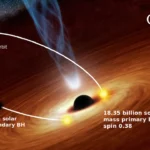 07Two Black Holes Observed Circling Each Other for the First Time
07Two Black Holes Observed Circling Each Other for the First Time












